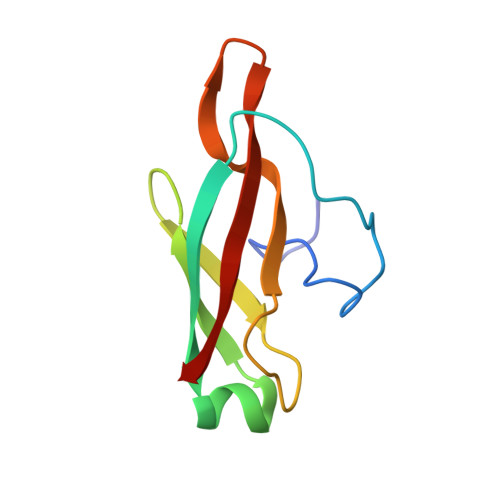Structural basis for client recognition and activity of Hsp40 chaperones.
Jiang, Y., Rossi, P., Kalodimos, C.G.(2019) Science 365: 1313-1319
- PubMed: 31604242
- DOI: https://doi.org/10.1126/science.aax1280
- Primary Citation of Related Structures:
6PPT, 6PQ2, 6PQE, 6PQM, 6PRI, 6PRJ, 6PRP, 6PRQ, 6PSI - PubMed Abstract:
Hsp70 and Hsp40 chaperones work synergistically in a wide range of biological processes including protein synthesis, membrane translocation, and folding. We used nuclear magnetic resonance spectroscopy to determine the solution structure and dynamic features of an Hsp40 in complex with an unfolded client protein. Atomic structures of the various binding sites in the client complexed to the binding domains of the Hsp40 reveal the recognition pattern. Hsp40 engages the client in a highly dynamic fashion using a multivalent binding mechanism that alters the folding properties of the client. Different Hsp40 family members have different numbers of client-binding sites with distinct sequence selectivity, providing additional mechanisms for activity regulation and function modification. Hsp70 binding to Hsp40 displaces the unfolded client. The activity of Hsp40 is altered in its complex with Hsp70, further regulating client binding and release.
- Department of Structural Biology, St. Jude Children's Research Hospital, Memphis, TN, USA.
Organizational Affiliation:
















